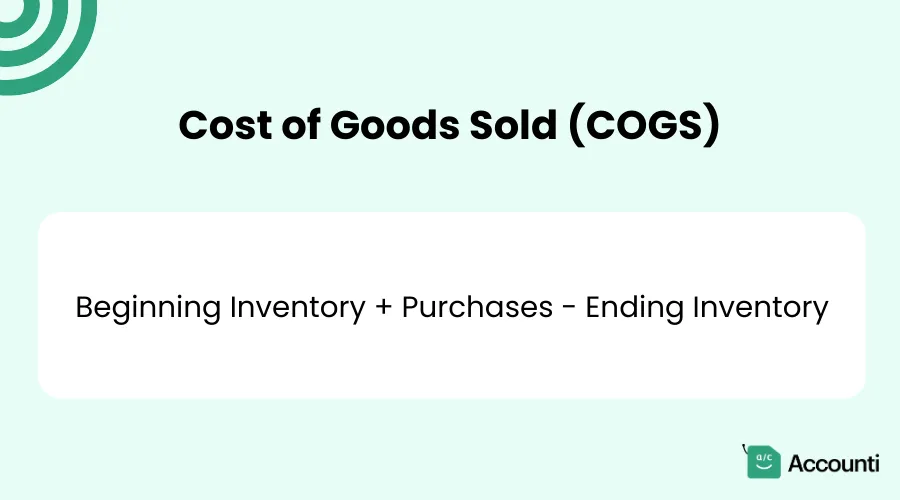What is the Cost of Goods Sold (COGS)?
Cost of Goods Sold (COGS) represents the direct costs associated with the production of goods that a company sells during a specific period. This includes the cost of materials and labor directly used to create the product. COGS is an essential metric for businesses as it is subtracted from total sales to determine the gross profit. Calculating COGS accurately helps businesses understand the true cost of their products, manage pricing strategies, and maintain profitability.
How to Calculate Cost of Goods Sold
The formula for calculating COGS is:

COGS = Beginning Inventory + Purchases - Ending Inventory
- Beginning Inventory: The value of the inventory at the start of the accounting period.
- Purchases: The cost of any additional inventory purchased during the period.
- Ending Inventory: The value of the remaining inventory at the end of the accounting period.
Example of COGS Calculation
Let's say a retail store has the following details for a month:
- Beginning Inventory: $10,000
- Purchases: $5,000
- Ending Inventory: $7,000
Using the formula:
COGS = 10,000 + 5,000 - 7,000 = 8,000
The Cost of Goods Sold for the month is $8,000.
Importance of COGS
COGS is crucial for business owners and financial analysts as it directly impacts a company’s gross profit. A lower COGS means a higher gross profit margin, which is desirable for any business. By understanding and managing COGS, businesses can identify areas for cost reduction and improve overall profitability.
Key Takeaways
- COGS includes all direct costs related to the production of goods sold.
- It is a vital measure for determining gross profit and managing business efficiency.
- Accurate COGS calculation is essential for financial reporting and strategic planning.
With this understanding, businesses can leverage the "Cost of Goods Sold Calculator" to streamline their financial assessments and make informed decisions for growth and success.

